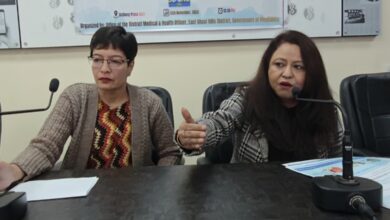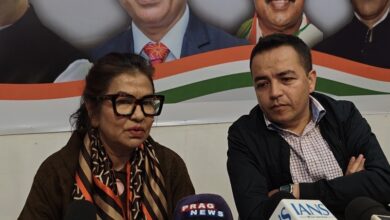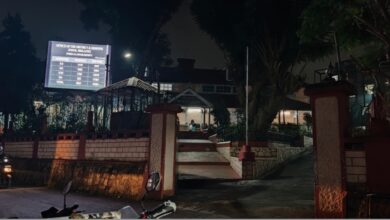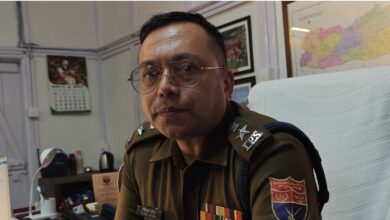Identity of Garos settled in north Bengal at stake
The tribe is not only losing its language but also the tradition of matriliny

Gyana Sangma came to north Bengal with her father about five decades ago. Her family was originally from Dhubri but resettled in Cooch Behar after her mother passed away.
“My elder sisters came here after marriage. So, my father thought it would be best to live here. It was a long time ago and I barely remember the year. I was a child then,” she said as she settled down on her sofa to talk about her family in particular and the Garo community in north Bengal in general.
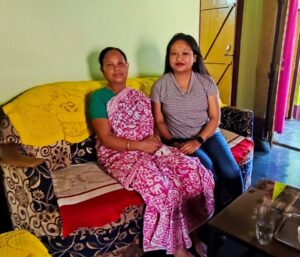
The 60-year-old woman’s family is among the 50-odd Garo households in Garopara under the Sitai Assembly constituency in Cooch Behar. Though many families, including that of Gyana’s, have relatives in Assam and Meghalaya’s Garo Hills, the tribe members settled here have detached from their roots long ago. The main reasons for the Garos in Bengal to drift away from their culture and tradition are the overwhelming influence of the majority community and the need to cope with the prevailing ignorance among the populace about their practices.
Among the practices that the Garo community in Bengal has lost is matriliny and most of the families here have accepted patriliny. “People do not want to face any trouble in official work. I faced similar problems while following matriliny. So, I decided to take my
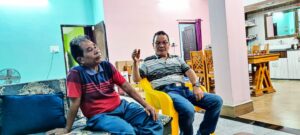
husband’s surname. My children too have taken their father’s surname,” said Gyana, who lost her husband, Ramendra Sangma, in the Kargil war.
For 66-year-old Dio Sangma of Garopara, the practice of matriliny has not completely vanished. While he has taken his mother’s surname, his children have adopted patriliny. “Not many people, including government officials, know about the custom and that often leads to uncomfortable questions. So, many Garos are choosing the patrilineal system,” said the retired state government official.
Dio came to north Bengal from Pakistan during the riots of 1965 and settled in Dinhata. After finishing his education there, he moved to Garopara for work and married there. He too has family members in Tura in Meghalaya’s West Garo Hills. He lives in his wife’s house, like most Garo and Khasi men in Meghalaya. This is another practice that is vanishing among the Garos in Bengal.
Almost all the Garo residents of Garam Basti are following the patrilineal system, informed Banikanta Marak, the owner of an eatery along National Highway 31 in Alipurduar. “We often face the question of why our surnames differ from our fathers’. We have to explain our custom. While some understand that, many do not. So, to avoid confusion and unnecessary hassles in the official work, our community members are moving away from the matrilineal system,” said the 59-year-old resident of Garam Basti.
There are over 100 Garo families in Garo Basti and most of them settled here from Bangladesh at the beginning of the last century and in 1971, said Banikanta. Some also have roots in Athiabari in Assam.
“I still have relatives in Bangladesh. My relatives are also there in Meghalaya’s Garo Hills,” he informed.
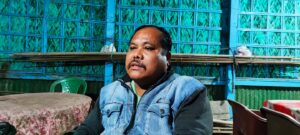
A handful of the Garos, like Garopara village head Nipram Marak, are holding on to the practice of matriliny despite the odds that they have to face. When asked about his role in upholding the Garo culture and tradition, Nipram was reticent to answer. He smiled and said that the community had approached the block development officer with a memorandum and “the gentleman, a Rabha, was quite a sensible person and understood the problem that we are facing”.
The Garo and Khasi are the only tribes in the country which follow the matrilineal system. In this, women — usually the family’s youngest daughter—are the clan/ancestral property custodians. Women in these tribes are more empowered than their counterparts in the mainland. But as matriliny vanishes, are women in the community losing their position too?
According to the Garo traditional pedigree, the mother’s name is written first and her husband’s name is added, Tura-based historian Prof Milton S Sangma said.
However, adding the husband’s surname is optional, informed Dr Silse D Marak, associate professor at B. Ed College, Tura.
“Matriliny should be protected by Garo women wherever they are. If it is deprived by any government, this will affect her overall empowerment,” she said when pointed out that Garo women in north Bengal prefer patriliny to their tradition to avoid red tape.
To a question on government intervention, she said the Meghalaya government can write to other states where there are Garo residents to protect matriliny and names given to the children as per the tradition and custom.
Living in Bengal amid Bengalis and several other local tribes has compelled the Garo community to change their way of living and this is evident from the farrago of practices that the tribespeople have adopted. While a majority of the Garos in Bengal follow Christianity, they are unlike their fellow tribesmen in Meghalaya when it comes to naming their children. Almost all the Garos in Bengal have Hindu names.
“Yes, this is unique among the Garos here. While you will find Christian names in Meghalaya, we have typical Hindu names,” said Moumita Sangma, Gyana’s daughter. She was trying to call her younger brother Surajit so that he could take the correspondents around Garopara and help meet village elders.
The Garos, who are of the Tibeto-Burmese lineage and belong to one of the three major tribes in Meghalaya, have a population of over 2,000 in north Bengal as per the 2011 census. The Garo settlements are mainly found in Garopara and Puthimari in Cooch Behar, and Garo Basti, Panialguri and Kalkut in Alipurduar.
According to Banikanta, the population of Garos in the state as per a 2019 survey that he led for the Kalchini Gram Panchayat is about 7,000. The number could not be independently verified. The Garos in Alipurduar, which has more than 80% SC/ST population, co-exist with other communities, such as Rajbongshi, Rabha, Bodo and Nepali. This has distorted their language too. Though most of the Garos in north Bengal speak fluent Bengali, even at home, some speak in Garo among themselves. However, the tribal language is not as pure as spoken in Meghalaya.
“No school here teaches Garo language, or for that matter any tribal language. So, our children learn Bengali in school. We do speak Garo at home but if you know the language you will notice that the way we speak is not the pure form (of the language) but a dialect that is the result of the influence of other languages,” said Dio.
“It is sad that our people are forgetting the language too. We are trying our best to hold on to it,” said Banikanta, adding that Bengali is the common mode of communication in his family.
However, the Garo residents of Garam Basti have taken the initiative to learn the pure form of the language. They have appointed a teacher from Tura, Biren Sangma, who started his tutorial in the village at the beginning of this year.
Rev. Eliezer N Sangma of Tura met the villagers a few years ago when he was returning from Bhutan. “They told me that they were interested in learning the language. So, I sent one person (Biren Sangma) to Bengal and now he is staying there with a Garo family,” said Rev. Eliezer, adding that the villagers are also taught about their culture and the tradition of Wangala dance. While many have heard about the Wangala festival in Meghalaya, none got the opportunity to witness the grandeur.
The one custom that is still followed by the tribe here is mahari, which is the family council that guards the customary laws. But the maharis are not as strong as they are in Meghalaya because not many customary laws remain to be guarded.
Banikanta would fall silent intermittently as he narrated the past and the present of his tribe in Bengal. The thought that the young generation might completely forget about the Garo culture was probably worrying him. Every time he stopped talking, the silence inside his dhaba would deepen only to be interrupted by the sound of heavy vehicles whooshing on the highway.
When asked how the West Bengal government was helping the Garo tribe retain its identity, Banikanta said it was not just one tribe but the government has been helping all tribes revive and preserve their unique traditions. “For instance, every block authority now organises handicrafts fair for the STs,” he informed.
But for the matrilineal tribe, the government needs to do more than organise fairs. It needs to educate its officials and spread awareness about the uniqueness of Garo practices so that the tribespeople do not have to be embarrassed and harassed for their age-old customs. The West Bengal government can take the initiative to collaborate with its counterpart in Meghalaya to organise the Wangala festival in north Bengal. This can also be a source of cultural tourism in the state. Most importantly, the authorities need the will to preserve the traditions, cultures and languages of all the tribes in the state so that they do not become extinct in the race to survive among the majority communities.

